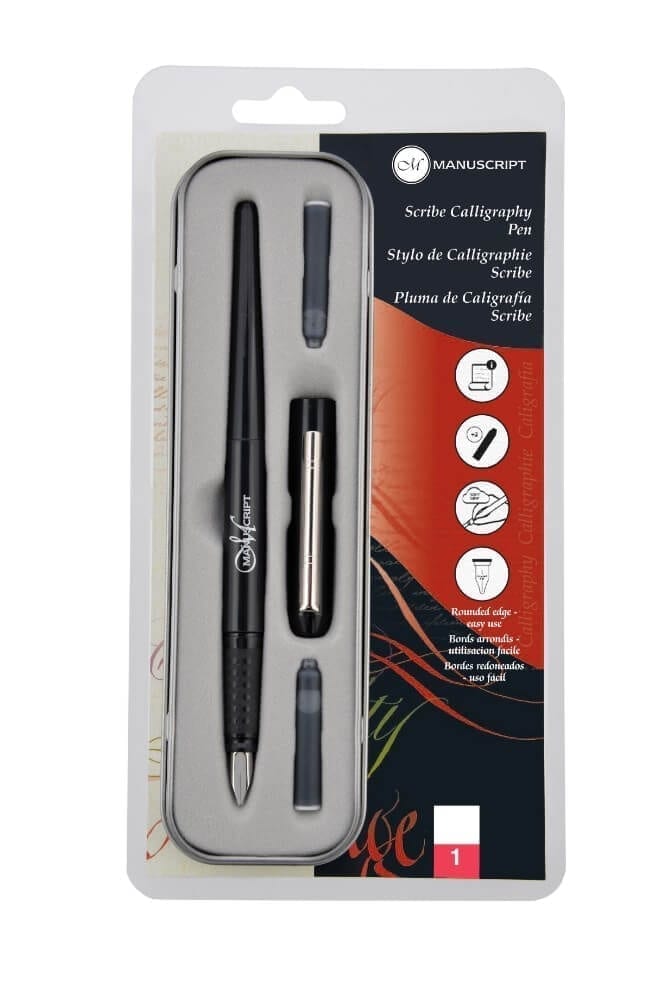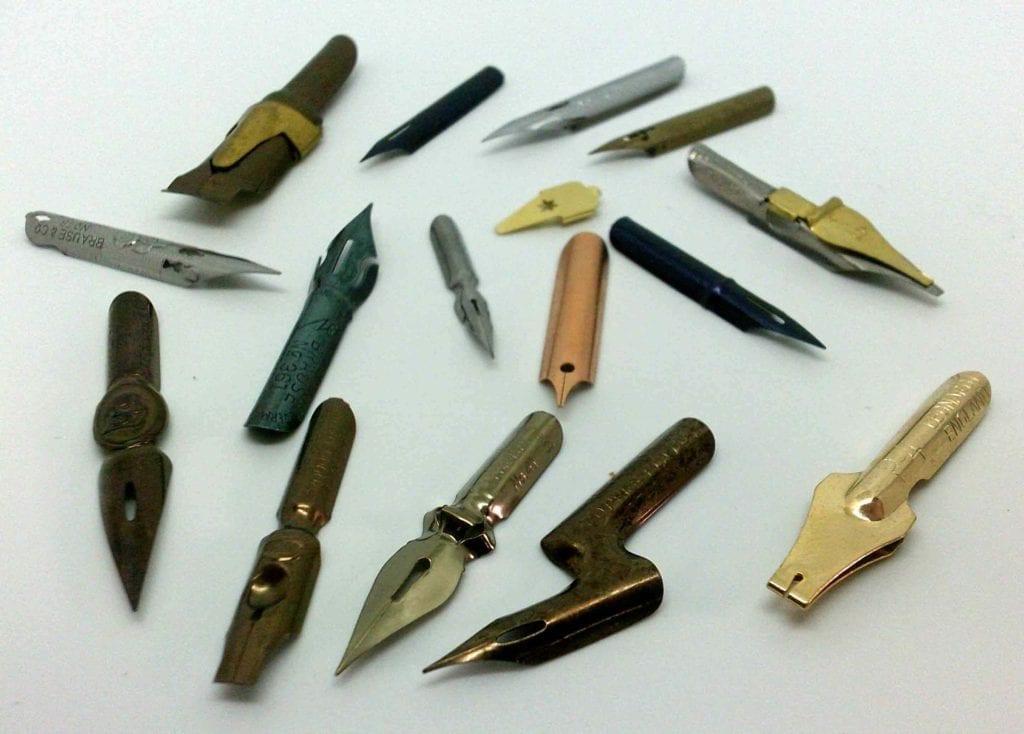When starting calligraphy it is one of the first things to think about, should I use a Fountain Pen or should I use a Dip Pen ? In short a fountain pen has a built in reservoir with a continuous flow of ink, whilst a dip pen requires constant filling.
1. Fountain Pen ;
A fountain pen, is a pen that has a built in ink reservoir. It is perhaps the easiest pen to use, for beginners in calligraphy. Fountain pens use cartridges that are pre-filled with ink, such as the Pilot Parallel Pens . Or a convertor which fills the fountain pen from a jar of ink. Fountain pens allows beginners to get up and running quickly and removes / avoids the issue of constantly having to refill the pen with ink.

Fountain pens after use, should be cleaned throughly after use; this can be difficult and slightly fiddly. Also the range of inks available in the cartridge form, is rather limited in comparison to inks available in bottles for dip pens.
2. Dip Pens ;
A dip pen also commonly referred to as a nib, is attached to a penholder; enabling the writer to dip the nib, into ink when needed. The range of nibs to choose from is vast, such as round hand, poster, scroll and other special effect nibs. Dip pen nibs fall into two categories edged and pointed dip pens, and are used for specific types of script.

Nibs can be bought individually and before first use it is recommended to briefly dip the nib into warm water, to remove a protective lacquer that protects the nib before use. Dip pens are not as forgiving as fountain pens, and as such it is recommended for beginners to use fountain pens; until they have gained sufficient skill and confidence.

And finally it should be noted that if you are left handed, there are specific dip pens and fountain pens available; as these pens are cut differently for left handed writes than right handers. And if you are ambidextrous, you have nothing to worry about. Thanks for reading.
